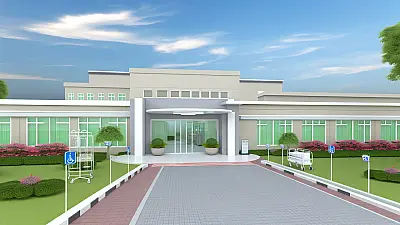SHREVEPORT, LA - State health inspectors documented improper personal hygiene techniques during a routine inspection at Southern Oaks Nursing & Rehabilitation Center on May 21, 2025, identifying practices that could increase infection risks for vulnerable residents.

Critical Hygiene Protocol Violations Observed
During the inspection, surveyors observed a certified nursing assistant (CNA) performing personal care that violated fundamental infection control protocols. The staff member was documented using incorrect wiping techniques during perineal care for a female resident, cleaning from back to front rather than the medically required front-to-back method.
The improper technique poses significant health risks, particularly for elderly nursing home residents who often have compromised immune systems. When perineal care is performed incorrectly, bacteria from the rectal area can be transferred to the urinary tract opening, dramatically increasing the risk of urinary tract infections (UTIs). UTIs are among the most common infections in long-term care facilities and can lead to serious complications including kidney infections, sepsis, and hospitalization.
The inspection report documented that the CNA "wiped between labia starting in the back and wiped toward the front," directly contradicting established medical protocols. This observation was significant enough that inspectors immediately addressed it with facility leadership.
Medical Implications and Health Risks
The violation represents more than a simple procedural error. For nursing home residents, many of whom have diabetes, kidney disease, or other conditions that affect their immune response, UTIs can quickly progress to life-threatening complications. Proper perineal care technique is considered a fundamental nursing skill taught in all CNA training programs specifically because of these serious health implications.
Research consistently demonstrates that UTIs account for approximately 30-40% of all healthcare-associated infections in long-term care facilities. When staff members use improper hygiene techniques, they create preventable pathways for bacterial contamination. E. coli bacteria, commonly found in fecal matter, is responsible for roughly 80% of UTIs. The back-to-front wiping motion observed during the inspection creates a direct route for this bacteria to enter the urinary tract.
Additionally, the inspector noted concerning practices regarding the washcloth usage during the care procedure. The same washcloth was used across multiple body areas, including moving from the groin area to the abdominal folds and then to the genital area. This cross-contamination practice further amplifies infection risks by potentially spreading bacteria across different parts of the body.
Industry Standards and Required Protocols
According to Centers for Medicare & Medicaid Services (CMS) guidelines and standard nursing practices, perineal care must always proceed from the cleanest to the least clean areas. For female residents, this means cleaning from the urethral opening toward the rectum, never in reverse. This technique is universally taught in healthcare education and is considered non-negotiable in infection prevention protocols.
The facility's Director of Nursing confirmed to inspectors that "female residents should be cleaned from front to back," acknowledging awareness of the proper protocol. This confirmation indicates that the facility's policies align with medical standards, suggesting the issue involves staff training implementation or compliance monitoring rather than policy deficiencies.
Standard protocol also requires using separate sections of a washcloth or multiple washcloths when cleaning different body areas to prevent cross-contamination. Each area should be cleaned with a fresh surface of the cloth, and movement should always be from clean to contaminated areas.
Training and Compliance Concerns
The violation raises questions about staff training effectiveness and supervision practices at Southern Oaks. While the facility's leadership demonstrated knowledge of correct procedures, the observed practice suggests potential gaps in ensuring all staff members consistently apply their training. Regular competency evaluations and direct observation of care practices are essential components of quality assurance in long-term care facilities.
The classification of this violation as "minimal harm or potential for actual harm" affecting "few" residents indicates that inspectors did not find evidence of widespread improper practices or actual infections resulting from the technique. However, any deviation from proper hygiene protocols in a healthcare setting requires immediate correction to prevent potential harm to residents.
Facilities are required to ensure all staff members receive initial and ongoing training in infection control practices, with particular emphasis on high-risk procedures like perineal care. This includes not only classroom instruction but also supervised practical application and regular competency assessments to verify proper technique maintenance.
Full Inspection Report
The details above represent a summary of key findings. View the complete inspection report for Southern Oaks Nursing & Rehabilitation Center from 2025-05-21 including all violations, facility responses, and corrective action plans.
💬 Join the Discussion
Comments are moderated. Please keep discussions respectful and relevant to nursing home care quality.